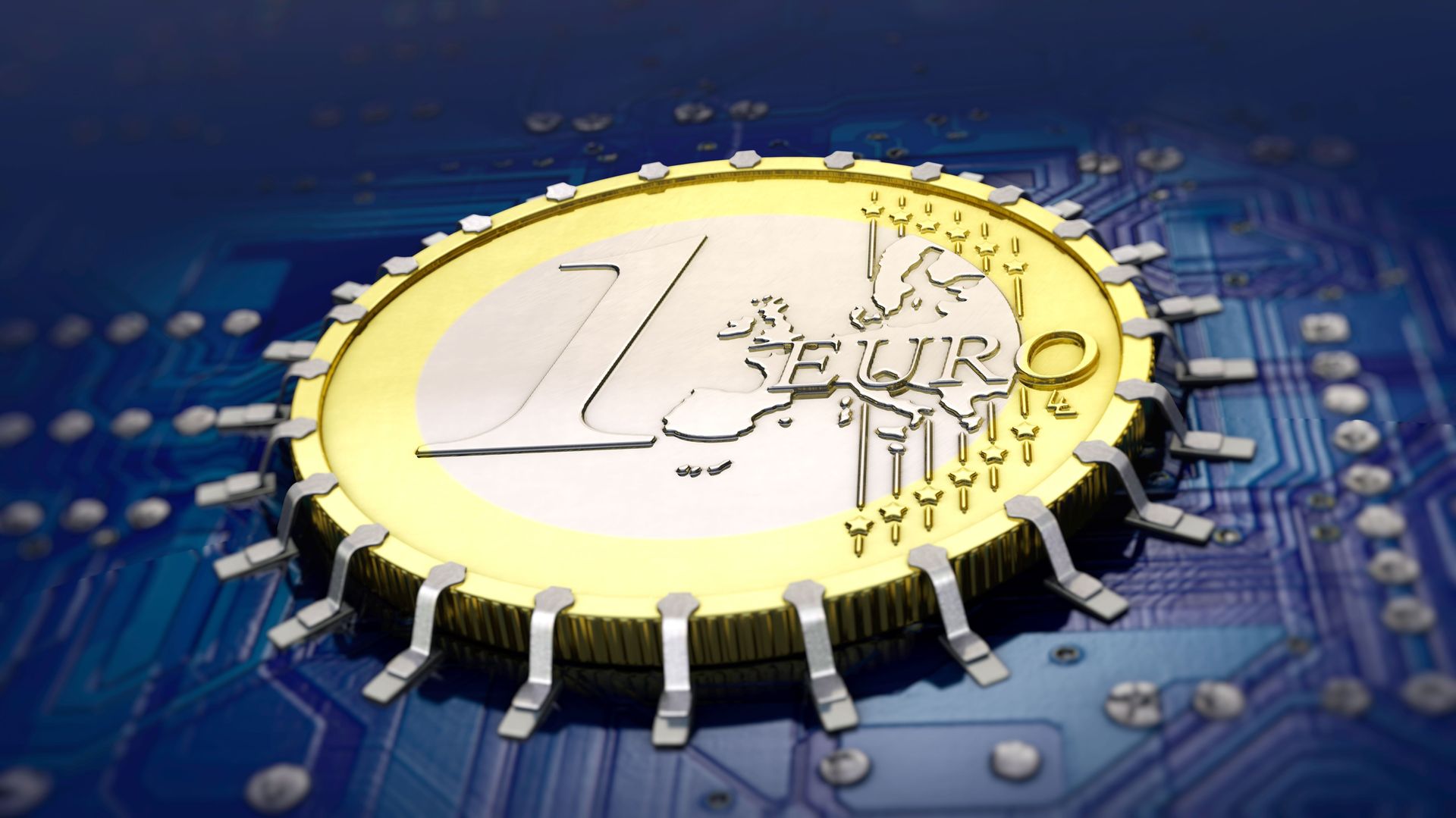(Kitco News) – Central bank digital currencies (CBDCs) are a trending topic globally as data provided by the Atlantic Council shows that 134 countries and currency unions, representing 98% of global GDP, are in some stage of exploring or creating a CBDC.
While the topic generates intense emotions from proponents and detractors, the way things are evolving currently suggests that many countries will eventually adopt digital fiat alongside traditional paper money and bank deposits as the digital age slowly encroaches on all aspects of society.
Though a future of CBDCs looks likely, naysayers still have several years to prepare for such a development, at least in the European Union, as Dr. Joachim Nagel, president of Germany’s central bank, told attendees at the DZ Bank Captial Market Conference 2024 that “It may take another four or five years before [a digital euro] is actually implemented.”
“Today, banknotes and coins are still the preferred means of payment at the point of sale. But the share of cash payments in retail turnover has roughly halved,” Nagel said. “In return, cashless payment methods have become increasingly important – a trend that is likely to continue.”
He said the digital transformation has “radically changed the payment landscape,” with new players in the realms of “FinTech start-ups and BigTechs” successfully entering and establishing prominent positions in the payments market.
“By offering innovative and convenient means of payment, they have challenged incumbent payment solution providers, even though they lack the same level of trust,” he said. “Trust is an important keyword when it comes to payments. Trust is the soul of money. And in times of change, as we are currently experiencing, trust is particularly important.”
Nagel noted that while digital payments are rising, “cash is being used less and less,” and since it cannot be used in digital payments, “it is also being used less at stores.”
“In such an environment, the question arises as to the central bank’s future role,” he said. “Cash is currently the only form of central bank money available to non-banks, including the general public. It is public money. All other means of payment for euro area citizens are provided by commercial issuers.”
He called public money the “cornerstone of our financial system” as it not only defines the unit of account but also “ensures that a euro is (literally) equivalent to a euro, no matter who issued the means of payment” when combined with regulations.
“In a digital world, it stands to reason that central banks are considering providing a digital alternative to cash,” he said. “Not only the Eurosystem, but also many other central banks around the world are currently engaged in exploratory work regarding CBDC.”
Nagel said that while the digital euro project entered the preparation phase in November, that doesn’t mean a final decision on issuing a digital euro has already been made. “The ECB Governing Council will only be able to reach such a decision once the legislative process at the European level has been concluded,” he said. “The introduction of a digital euro needs political backing and a solid legal framework.”
“A digital euro won’t be introduced any time soon. It may take another four or five years before it is actually implemented,” Nagel said.
He went on to elaborate on the benefits a digital euro would have for customers and merchants.
“First, consumers would benefit from a European means of payment that is safe, convenient, fast, reliable, free of charge and usable throughout the entire euro area,” he said. “As things currently stand, German bank cards, for example, don’t always work in other euro area countries.”
He added that the digital euro could be used for a variety of payments, including “online shopping or in-store, for payments between individuals and even for transactions with public authorities. This is especially true if the digital euro acquires the status of legal tender, as it should.”
People will be able to pay with the digital euro using their existing online banking app or through the digital euro app, while those who don’t own a smartphone will have other options.
“One option currently under discussion by the legislators is the issuance of physical cards that would also be available to people without a bank account,” Nagel said. “The digital euro will be an inclusive means of payment.”
He said the central bank also plans to make offline payments possible, which “can be a useful functionality when there is no internet connection available (or in the event of a power failure).”
“Many people will appreciate the high level of privacy the digital euro will provide,” Nagel said. “There is no reason for anyone to be afraid of becoming a ‘see-through customer.’ While some critics argue that the digital euro would enable governments to monitor their citizens, the opposite is true.”
Further addressing privacy concerns, he said that, unlike the motivations of many commercial payment providers, “the Eurosystem has no interest in monitoring people’s payment patterns. The Eurosystem would not be able to identify people based on the payments they make. We would see only a minimal set of data necessary to fulfill Eurosystem tasks, such as settlement.”
“Banks and other payment service providers processing digital euro payments would not be allowed to use personal and transaction-related data for commercial purposes – unless users explicitly give their consent for them to do so,” he added. “They would, however, have limited access to these data to the extent necessary in order for them to comply with anti-money laundering and counter-terrorism financing regulations. Offline payments would, therefore, be limited to low-value transactions.”
Nagel said that only cash “offers a level of privacy comparable to the digital euro,” and assured that physical cash “won’t be going anywhere. The digital euro would be a complement to cash, not a substitute.”
For merchants, a digital euro would eliminate the fees charged by payment intermediaries as “The Eurosystem would bear its own costs as it does with cash today, and not charge merchants.”
“Today, retailers often feel obliged to offer their customers a variety of payment solutions, some of which are quite expensive,” he said. “The digital euro would increase competition in the payments market. Merchants could negotiate lower transaction fees with private payment service providers.”
Merchants would also receive their payments without delay “by means of instant settlement,” he added. “Just like cash, this would allow goods and money to be exchanged simultaneously. There would be no outstanding claims.”
Pushing back against those who say there are already enough payment methods available, Nagel said, “Both consumers and retailers would appreciate the benefits of having a single payment instrument that ticks all the boxes – online and offline.”
For banks, a digital euro can help “reduce reliance on non-European payment infrastructures, he added. “Europe needs to become more resilient and independent.”
While many banks are concerned that the digital euro might become an attractive substitute for bank deposits, Nagel said, “The Eurosystem is aware of the potential risks and will take the necessary precautions to make sure that they do not materialize.”
“First, the Eurosystem has no intention of remunerating digital euro holdings,” he said. “And second, there will be a holding limit. Both measures underline that the digital euro is not meant to be a store of value.”
“We would see to it that people will not use the digital euro as a store of value, but as a means of payment, as intended,” Nagel said. “Rest assured that the Eurosystem has every intention of retaining the tried-and-tested two-tier banking system in the euro area.”
In closing, Nagel cited Ken Olsen, the founder of Digital Equipment Corporation, who in 1977 said, “There is no reason anyone would want a computer in their home.”
“How wrong he was!” Nagel said.
“And when the Brandenburg Gate was opened to cars in 1998, few would have thought that almost everyone today would be using a smartphone,” he added. “I am sure that many people would have said that they neither need nor want a tiny computer in their pocket. But most of them changed their mind when they saw it in practice. The same may well happen with the digital euro.”
“The extension of central bank money into the digital sphere is regarded by some as a marginal issue. And some are even afraid that it might do harm,” he concluded. “However, I am convinced that the digital euro will be a success and will deliver benefits to all. It will become a central place in the payments landscape.”











